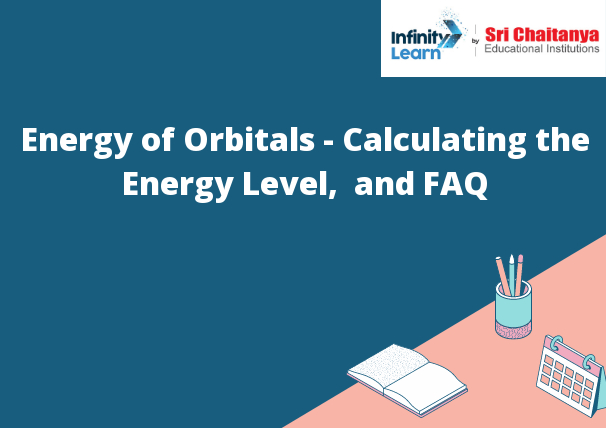Table of Contents
Energy of Orbitals :
The energy of an orbital is determined by the number of electrons in it and the strength of the electrostatic force between the electrons and the nucleus. The higher the energy of an orbital, the more energy it takes to remove an electron from that orbital.

What is the Azimuthal Quantum Number (L)?
The azimuthal quantum number (L) is the quantum number that describes the shape of an orbital. It is also known as the orbital angular momentum quantum number.
Orbital Energies
The following table gives the orbital energies (in electron volts) of the first few shells of the atom.
Shell 1 (1s)
Shell 2 (2s, 2p)
Shell 3 (3s, 3p, 3d)
Shell 4 (4s, 4p, 4d, 4f)
Shell 5 (5s, 5p, 5d, 5f, 5g)
Shell 6 (6s, 6p, 6d, 6f, 6g, 6h)
Shell 7 (7s, 7p, 7d, 7f, 7g, 7h, 7i)
-13.6
-3.4
-0.5
2.3
6.5
14.3
-27.2
-8.5
-1.5
4.3
10.2
18.6
-51.2
-14.7
-2.8
6.9
15.5
26.1
-86.2
-21.2
-4.5
9.5
20.2
33.6
Calculating the Energy Level of an Orbital
The energy level of an orbital is the amount of energy it takes to put an electron in that orbital. The higher the energy level, the more energy it takes to put an electron in that orbital.
Which Factors Affect Orbital Energy?
The factors that affect orbital energy are mass, radius, and the gravitational constant.
The Energy of Orbital in Hydrogen Atom
The energy of orbital in hydrogen atom is quantized and it is inversely proportional to the distance of the electron from the nucleus.








